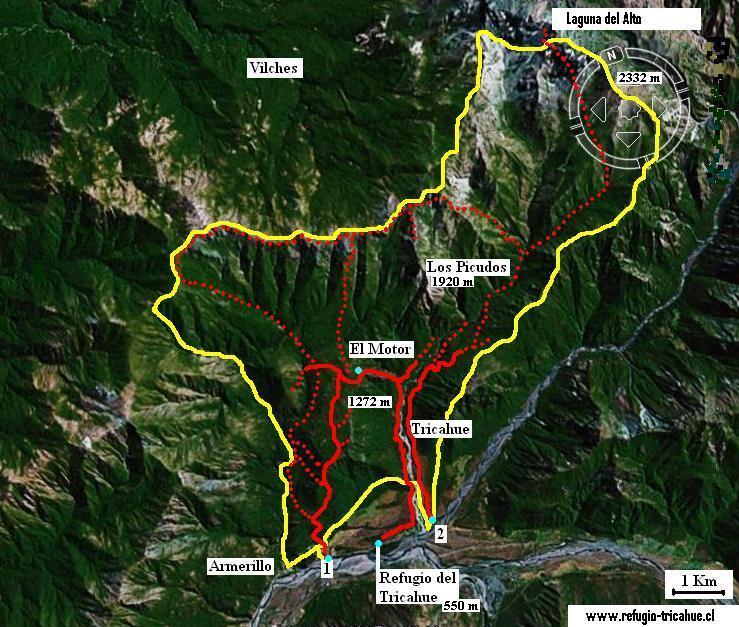The Tricahue Park
Situated between the Armerillo and the Tricahue river, 4300 hectares of roble tree-covered mountains where numerous plants and animals sometimes endemics (typical from the area) or to be extinguished live.
Marked out pathways will guide you to different remarkable points. Vantage points, Old big trees, springs, waterfalls and natural crystal clear pools will be your fellow travelers, such as an abundant biodiversity, part of a particular ecosystem made from northern and austral biotopes.
Price:
Entrance: 4 dollars/person ($ 2000).
Flora
We listed 8 species of the genus Nothofagus, which is a maximum diversity of the genus for a same place in the region:
- Coihue (N. Dombeyi)
- Huala (N. Leonni)
- Hualo (N. Glauca)
- Lenga (N. Pumillo)
- Nirre (N. Antartica)
- Rauli (N. Alpina)
- Roble (N. Obliqua)
- Roble de Santiago (N. Macrocarpa)
Most of the representative species of the region are present:
- Arrayan (Luma Apiculata)
- Boldo (Peumus boldus)
- Canelo (Dimys winteri)
- Cordilleran ciprés (Austrocedrus chilensis)
- Huillipatagua (Citronella mucronata)
- Litre (Lithrae caustica)
- Maiten (Maytenus boaria)
- Manio (Podocarpus saligna)
- Pelu (Sophora microphylla)
- Peumo (Cryptocaria alba)
- Radal (Lomatia hirsuta)
Fauna
We listed numerous birds like:
- The Black Woodpecker (Campephilus magelleanicus)
- The Condor (Vultur Gryphus)
- The Torrent Duck (Merganetta Armata)
- The Peuco (Parabuteo unicintus)
- The Pitio (Colaptes pitius)
- The Great Horned Owl (Bubo virginianus)
- The Zorzal (Turdus falcklandii)
- Tricahue Parrot (Cyanoliseus patagonus)
And a lot more.
Few mammals are present:
- The Reddish Fox (Pseudalopex culpaeus)
- The Pudu (Pudu puda)
- The Puma (Felis concolor)
If you happen to see other species during our trek, please give us the information!
